
For this edition of Classic Ink, we are going to take a look back at Husqvarna’s 1983 Motocrossand off-road lineup.
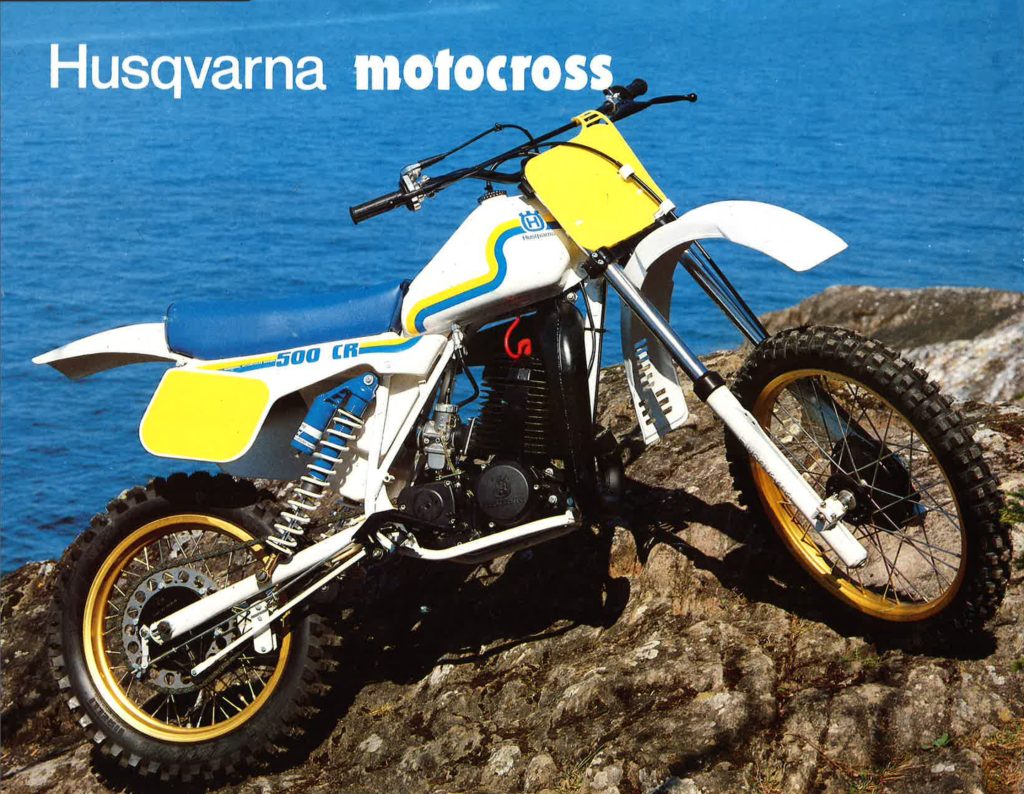 In 1983, Husqvarna introduced an all-new look that many today consider to be its best. The iconic yellow and blue color scheme was a nod to the colors of the Swedish national flag and tribute to their proud Swedish heritage. Photo Credit: Husqvarna
In 1983, Husqvarna introduced an all-new look that many today consider to be its best. The iconic yellow and blue color scheme was a nod to the colors of the Swedish national flag and tribute to their proud Swedish heritage. Photo Credit: Husqvarna
By 1983, the Japanese had a firm hold on the motocross world and with one look at Husqvarna’s motocross lineup it is not hard to see why. As beautiful as these bikes were in their new for ’83 white livery, they were clearly a step behind the Japanese Big Four in terms of technology. Dual shocks, air-cooling, and spindly 40mm forks were all relics of the 1970s that the Japanese had left in their rearview mirror. By 1983, all the Japanese 125s and 250s had moved to liquid cooling and advanced single shock linkage rear suspension systems. In 1983, Kawasaki even had a front disc brake on their full-size motocross machines.
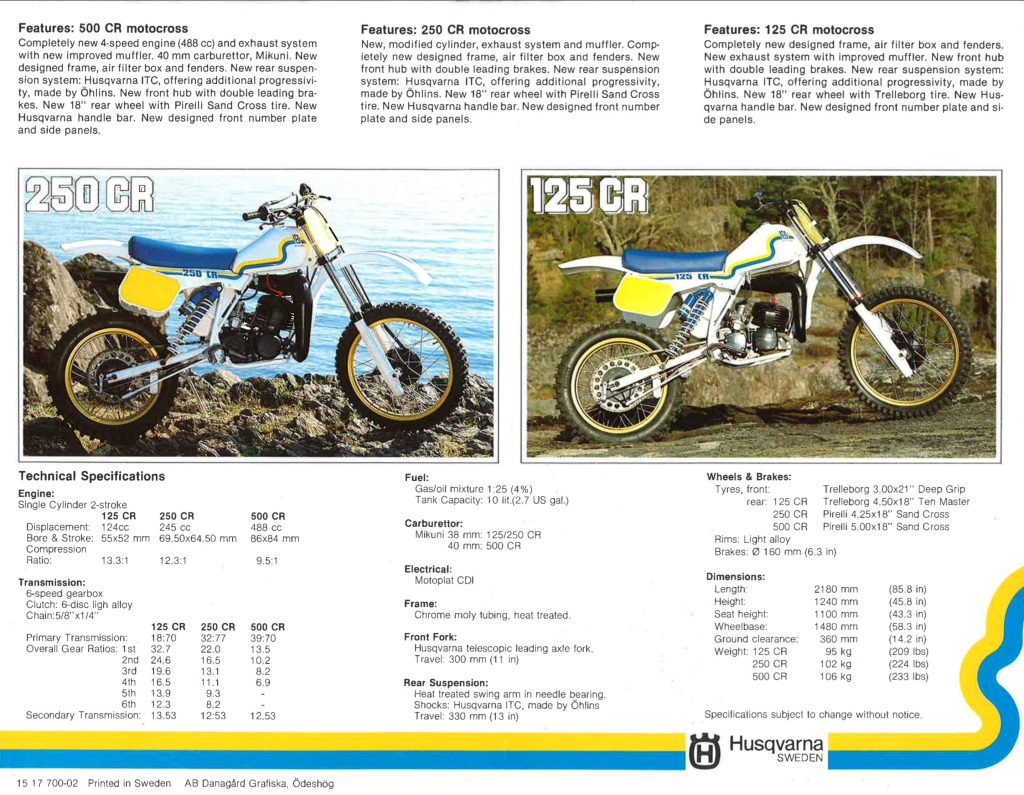 While certainly beautiful to look at, the 1983 Husqvarnas were a step behind the Japanese in motocross performance in 1983. Photo Credit: Husqvarna
While certainly beautiful to look at, the 1983 Husqvarnas were a step behind the Japanese in motocross performance in 1983. Photo Credit: Husqvarna
By contrast, Husqvarna seemed content to take things slowly and work on refinement rather than reinvention. This was less of an issue in the 500 class, where all the bikes had more than enough power and air-cooling was still the class standard. The big Husky 500CR was smooth, slow handling, and the exact opposite of Honda’s quick-revving and corner-carving CR480R. Many riders still liked the big Swede’s more sedate personality, but hard chargers gravitated to the Honda in 1983.
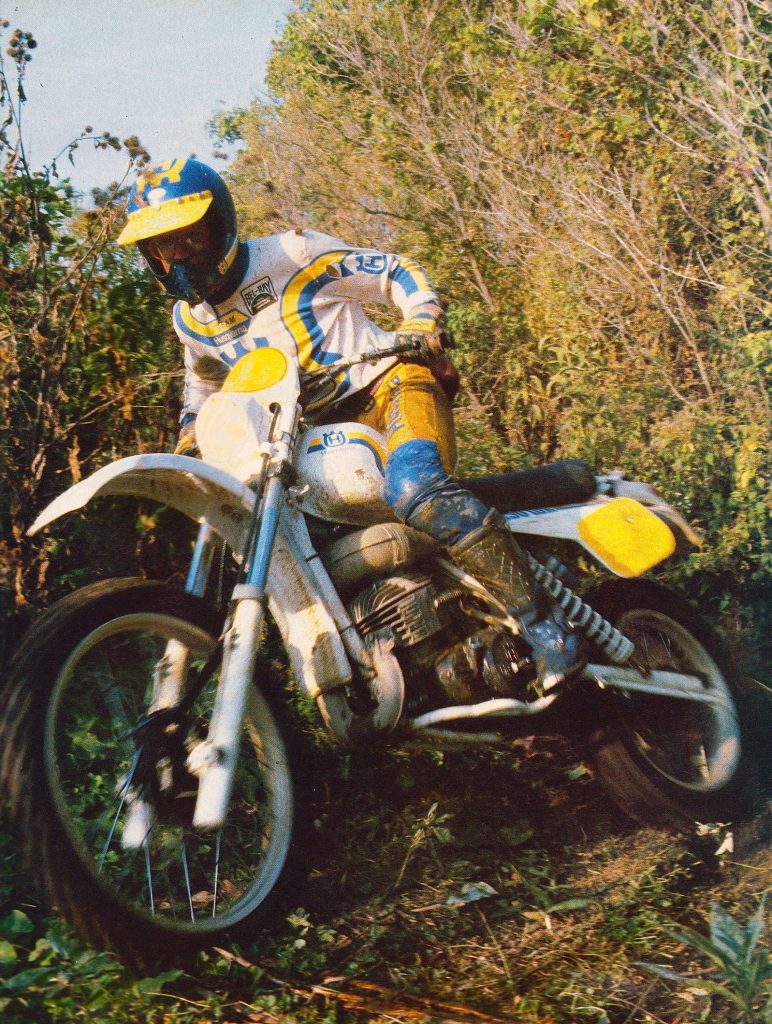 While their motocrossers were no longer at the front in 1983, Husqvarna’s off-road offerings continued to dominate the standings. In 1983, Husqvarna captured its 13th consecutive AMA National Enduro title. Photo Credit: Dirt Bike
While their motocrossers were no longer at the front in 1983, Husqvarna’s off-road offerings continued to dominate the standings. In 1983, Husqvarna captured its 13th consecutive AMA National Enduro title. Photo Credit: Dirt Bike
In the 250 and 125 divisions, the slow and steady approach was more of a hindrance. Neither of Husky’s smaller offerings were particularly nimble and both suffered in motor performance when compared to the Japanese machines of the time. Suspension performance was not really a limitation despite the outdated appearance of the components. The dual Ohlins shocks looked old-fashioned but worked well and the Husqvarna-built forks provided a plush ride. Hard chargers noticed the increased flex of the smallish fork legs but they were competitive in most circumstances with the Kayaba and Showa components found on the CR, KX, RM, and YZ.
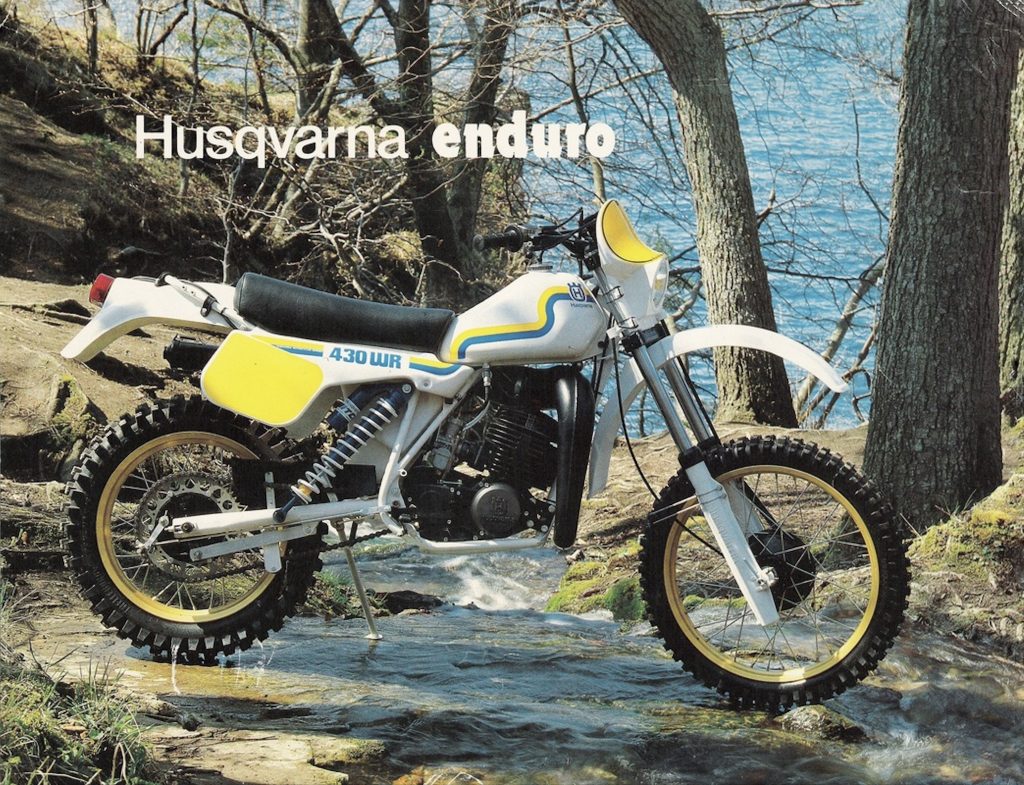 The air cooling and dual shocks that were scoffed at by the motocross masses were largely embraced by off-roaders looking for reliability and simplicity in rugged conditions. Photo Credit: Husqvarna
The air cooling and dual shocks that were scoffed at by the motocross masses were largely embraced by off-roaders looking for reliability and simplicity in rugged conditions. Photo Credit: Husqvarna
In the off-road arena the ‘83 Husqvarnas were far more at home and here they were prized for their smooth engines, stable handling, and excellent off-road performance. At the time, Husqvarna had captured a remarkable 12 straight AMA Enduro titles and would go on to card four more before Kevin Hines and KTM would finally break their incredible streak in 1987. Riders like Dick Burleson, Mike Melton, and Terry Cunningham made the Huskys the bikes to beat during this era. Wood warriors who valued simplicity and reliability over the high-tech trickery embraced Husqvarna’s use of air cooling and dual shocks. On a motocross course, the lack of liquid cooling and monoshock suspension was seen as a shortcoming, but off road and miles away from anywhere, these features were often seen as one more thing that could leave you stranded on the trail.
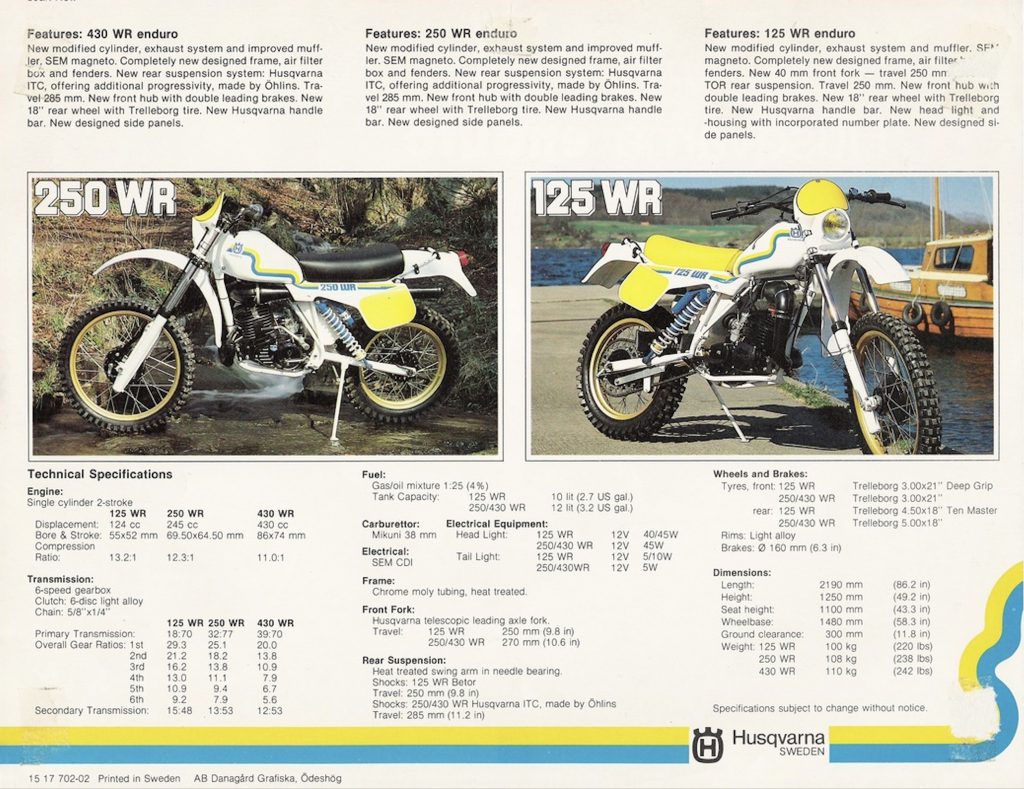 The Japanese of the seventies and eighties never embraced the 125 off-road class instead preferring to focus on 175 and 200cc machines. Photo Credit: Husqvarna
The Japanese of the seventies and eighties never embraced the 125 off-road class instead preferring to focus on 175 and 200cc machines. Photo Credit: Husqvarna
Beautiful, well built, and uniquely Swedish, the 1983 Husqvarnas were a perfect example of the shifting power structure within the motorcycle industry. The incredible pace of innovation introduced by the Japanese was making it difficult for legacy brands like Husqvarna to keep up. Their motocross machines still had their devotees, but those supporters were most likely looking at other things than outright performance. In the world of trees and water crossings, the Swedes were still king, but even those days were numbered. Increased pressure from KTM and eventually, the Japanese, would see the Swedes supplanted as the preeminent brand in off-road racing. In 1987, the era of Swedish Husqvarna would end with the selling of their motorcycle operations to Italy’s Cagiva. The Husqvarna name would continue, but its roots would no longer sprout from Scandinavia. Today, Husqvarna is once again one of the premier brands in motocross and off-road racing. After two decades of mixed results under Italian and German ownership, KTM has finally brought the Husqvarna name back to prominence. Today’s Husqvarna may lack the unique personality of its Swedish forebears, but its continued relevance through numerous acquisitions and upheavals is a tribute to the enduring strength of the brand.
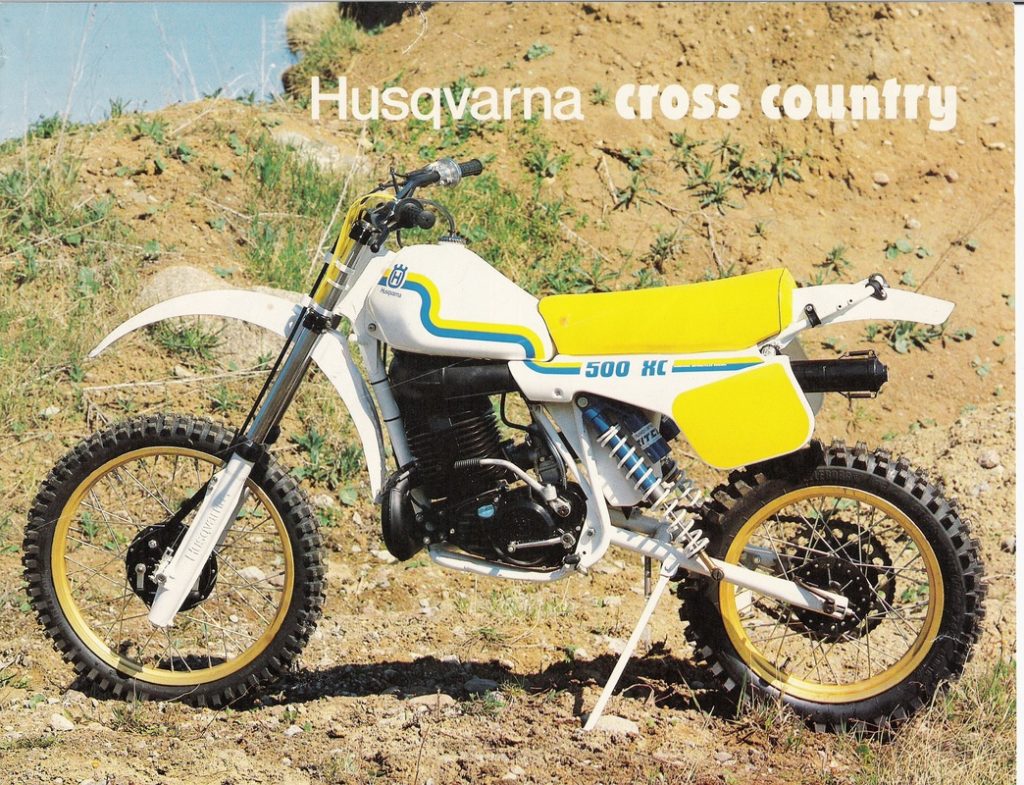 Husqvarna offered an expansive lineup of off-road machines in 1983 including Enduro and Cross-Country offerings.
Husqvarna offered an expansive lineup of off-road machines in 1983 including Enduro and Cross-Country offerings.
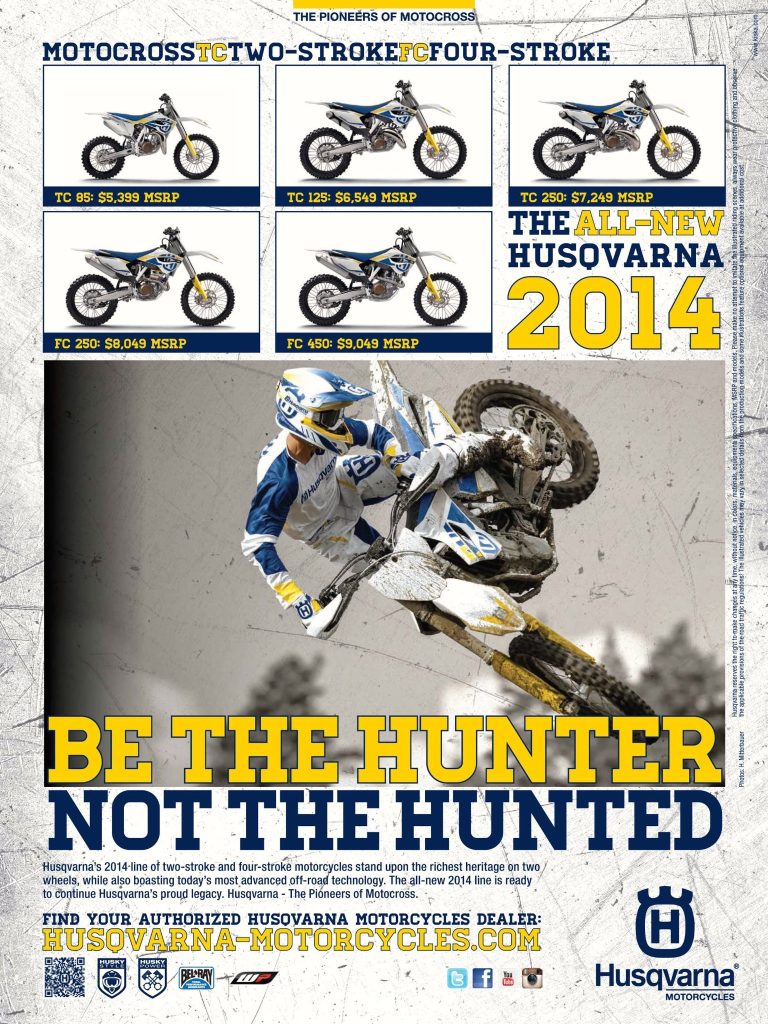 In 2014, KTM acquired the Husqvarna brand from BMW and brought back the iconic white, yellow, and blue originally introduced in 1983. Photo Credit: Husqvarna
In 2014, KTM acquired the Husqvarna brand from BMW and brought back the iconic white, yellow, and blue originally introduced in 1983. Photo Credit: Husqvarna




